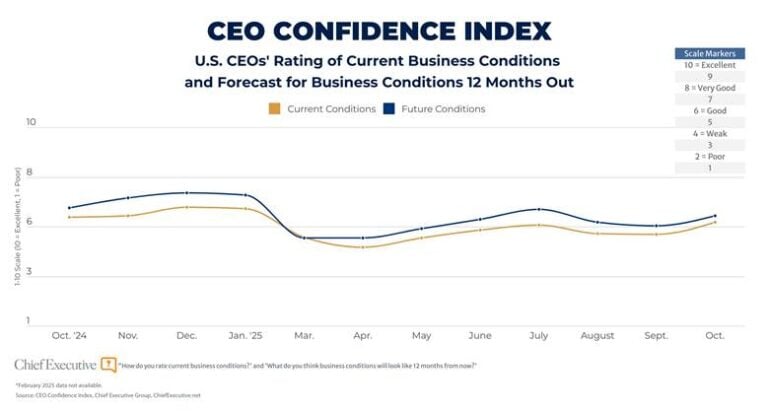
 This is the first installment of an exclusive three-part series of articles from Alex Goryachev, Cisco’s director of innovation strategy on how CEOs can create a roadmap for successful innovation programs.
This is the first installment of an exclusive three-part series of articles from Alex Goryachev, Cisco’s director of innovation strategy on how CEOs can create a roadmap for successful innovation programs.
Innovation is a word that is tossed around too often. Companies talk about being “innovative” and “cutting-edge,” but many struggle to make innovation a part of their everyday business. With today’s digital economy perpetuating the notion of “disrupt or die,” simply saying you are innovative or lumping innovation efforts in with R&D and product development are not enough. To survive and thrive, all organizations need an innovation program inspiring every employee company-wide with sufficient budget, mentors and resources.
The challenge is that there is no such “thing” as innovation. It is a mindset and an attitude. It’s learning to think and act more like an entrepreneur in a startup. More specifically, it’s about people coming together, sharing their most passionate ideas and collaborating with partners inside and outside of an organization to monetize new, transformational solutions, business models and value propositions. For that reason, it should not be not a one-and-done exercise nor an annual event. Rather, innovation must be continuously woven into the everyday fiber of a business – it needs to be a living, breathing part of an organization’s culture, starting at the top.
But because innovation is bit more abstract than traditional R&D, companies struggle to get their programs off the ground. According to KPMG and Innovation Leader’s Benchmarking Innovation Impact 2018 report, 60 percent of innovation executives surveyed say their companies are still in the early phases of innovation maturity. Many are working with limited budgets and say political/turf wars and cultural issues are hindering their programs’ ability to deliver impact.
So, where do you start when creating an innovation program? What’s the desired outcome and how do you get there? In this three-part “Roadmap to Innovation” series, I’ll guide you through the steps and considerations for building your own innovation program, no matter your company’s industry or size. In this first part of the series, I’ll discuss how to begin by aligning your program with your business strategy. Let’s get started.
Three Types of Innovation
There are three types of innovation: incremental, adjacent and transformational. Incremental innovation typically involves improving existing products or services that are closely tied to the company’s core business. Think of a soft drink company creating a new flavor, for a simple example. Adjacent innovation involves expanding into neighboring markets and appealing to new customers, such as an automotive company creating a car-sharing subscription service. Lastly, transformational, or disruptive, innovation entails creating completely new business models for new markets. Amazon Web Services (AWS) is a result of transformational innovation. It is unlike Amazon’s core e-commerce business, yet has been a wildly successful generator of new revenue.
While companies can and should embrace all three, it’s important to first determine how much to invest in each type of innovation. Most innovating companies, according to KPMG, follow the “50-30-20” ratio – focus 50 percent of innovation efforts on incremental innovation, 30 percent on adjacent and 20 percent on transformational. This ratio applies to all types of companies.
Although incremental innovation is the safest bet and can deliver short-term results, innovation practitioners should start upping the ante on transformational innovation. Mass digitization and disruptive innovations have made markets too competitive, customers more demanding and technology changing too rapidly to settle for incremental innovation. For these and other reasons, I advocate reversing the ratio: 50 percent transformational, 30 percent adjacent, 20 percent incremental.
While transformational innovation certainly carries the most risk, it is also potentially the most rewarding, with long-term benefits. But, transformational innovation doesn’t occur overnight. It will take some patience, perseverance and a host of new attitudes, capabilities and resources. In the end, it comes down to striking a balance – follow a ratio that strategically aligns with your business objectives, but never lose sight of your long-term goals and how transformational innovation can help you achieve them. This is why it is so vital for organizations to make innovation a continuous and virtuous cycle, embedded in the everyday culture of the workplace.
Building Your Teams
Once you decide how to divvy up your innovation efforts, you must ensure you have the right teams driving them. According to KPMG’s study, 82 percent of companies surveyed said that specific business units “owned” incremental innovation. This is likely because incremental innovation focuses specifically on improving existing products, services and processes.
On the other hand, survey participants said that adjacent innovation required a broader range of team members, including external collaborators. Business units are still largely responsible for executing initiatives, but a central innovation team spearheads the efforts. To the contrary, only 24 percent of survey participants said business units are responsible for transformational innovation. This is not surprising, as business units must focus on delivering near-term growth, and let central innovation teams and even third-party experts take the reins on riskier, long-term projects.
While each type of innovation should be led by a designated team, it is important that businesses not silo their efforts. True innovation requires cross-functional collaboration – employees from all ranks, roles, departments and experience levels should participate in innovation programs. Innovation is by no means a solo endeavor, nor should it fall on a single business unit or executive. You’ll have much more successful outcomes if you open innovation to all employees, embracing team-based diversity and inclusion. Very rarely do the best ideas arise when everyone hails from the same discipline, department, industry or even socioeconomic background. Innovation is a team—not a political or bureaucratic—sport were everyone has a valued role. Therefore, you’ll need to transparently communicate across your organization that everyone is welcome to share their ideas and tap into their inner entrepreneur. As I like to say, innovation is better together.
In the second part of this series, I’ll take this “better together” paradigm a step further and share how to encourage and incentivize your employees—across every function, grade and region—to innovate. I’ll also explore how, as a chief executive, you can fund your innovation programs and steer clear of obstacles to a successful initiative. Until then, I encourage you to identify which types of innovation will best align with your company’s goals and mobilize your teams to help change the game.
Related: Lessons In Disruption From Dean Kamen




0

1:00 - 5:00 pm
Over 70% of Executives Surveyed Agree: Many Strategic Planning Efforts Lack Systematic Approach Tips for Enhancing Your Strategic Planning Process
Executives expressed frustration with their current strategic planning process. Issues include:
Steve Rutan and Denise Harrison have put together an afternoon workshop that will provide the tools you need to address these concerns. They have worked with hundreds of executives to develop a systematic approach that will enable your team to make better decisions during strategic planning. Steve and Denise will walk you through exercises for prioritizing your lists and steps that will reset and reinvigorate your process. This will be a hands-on workshop that will enable you to think about your business as you use the tools that are being presented. If you are ready for a Strategic Planning tune-up, select this workshop in your registration form. The additional fee of $695 will be added to your total.

2:00 - 5:00 pm
Female leaders face the same issues all leaders do, but they often face additional challenges too. In this peer session, we will facilitate a discussion of best practices and how to overcome common barriers to help women leaders be more effective within and outside their organizations.
Limited space available.

10:30 - 5:00 pm
General’s Retreat at Hermitage Golf Course
Sponsored by UBS
General’s Retreat, built in 1986 with architect Gary Roger Baird, has been voted the “Best Golf Course in Nashville” and is a “must play” when visiting the Nashville, Tennessee area. With the beautiful setting along the Cumberland River, golfers of all capabilities will thoroughly enjoy the golf, scenery and hospitality.
The golf outing fee includes transportation to and from the hotel, greens/cart fees, use of practice facilities, and boxed lunch. The bus will leave the hotel at 10:30 am for a noon shotgun start and return to the hotel after the cocktail reception following the completion of the round.